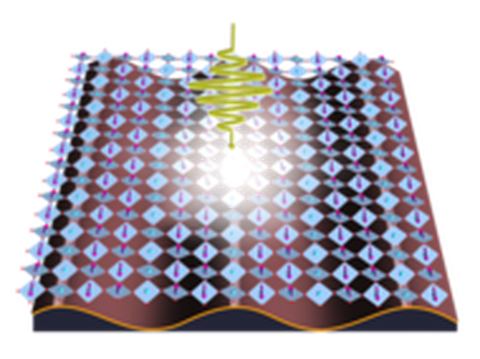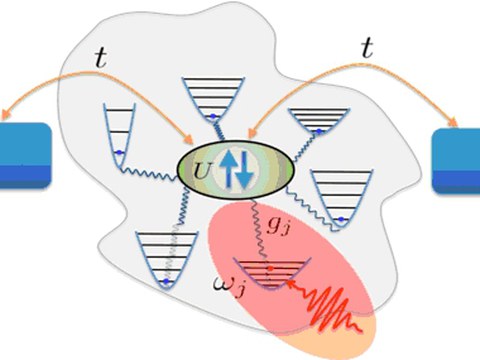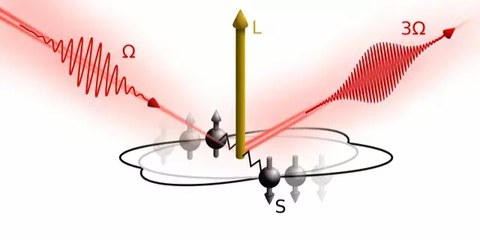Research projects
Table of contents
Ultrafast Control and Spectroscopy of Complex Quantum Materials
We apply advanced nonlinear optical methods such as ultra-broad band pump-probe spectroscopy to investigate and control ultrafast dynamics in complex solid-state materials. The search for new functionalized materials is highly desired for technological progress allowing for novel applications. Therefore materials by design became a longstanding goal in fundamental research where new functionalities are often predicted based on chemical composition and structural arrangement. In that context complex quantum materials are a driver in modern condensed matter physics and materials research. Typically they are characterized by strongly interacting electrons. Combined with the detailed structural composition of the material that produces a rich set of electronic phases that give rise to emergent phenomena like superconductivity or ferroelectricity that are often difficult to predict.
Finding new ways of manipulating the complex interplay of electronic phases or effectively tuning electronic interactions opens new avenues in controlling physical properties and designing new functionalities. In our group we investigate different scenarios like the balancing between competing phases triggered by ultrashort light pulses or explore possibilities of dynamical stabilization of new states of matter in periodically driven light fields. One research focus is the light induced superconductivity in high-temperature superconductors that was explored only recently. Here we aim to develop novel spectroscopic methods to understand this remarkable phenomenon and apply the successful mechanisms of optical and vibrational control to other novel quantum materials.
[1] S. Kaiser et al. Optically induced coherent transport far above Tc in underdoped YBa2Cu3O6+δ.
Phys. Rev. B 89, 184516 (2014).
[2] W. Hu et al. Optically enhanced coherent transport in YBa2Cu3O6.5 by ultrafast redistribution of interlayer coupling.
Nature Materials 13, 705 (2014).
[3] M. Mitrano et al. Possible light-induced superconductivity in K3C60 at high temperature. advanced online publication,
Nature (2016), doi:10.1038/nature16522
Non-Euqilibrium Quantum Many Body Dynamics
The interplay of correlations that leads to electronic order in the Mott transition or Charge Density Wave state is one of the key challenges in correlated electron systems. It gives rise to a large variety of different ground states ranging from highly unconventional (“bad”) metals to charge density wave states or superconductivity. The case of the Mott insulator is due to high electronic correlations competing with the kinetic energy of the conducting electrons. Doping this Mott insulating state tunes the hierarchy of the competing interactions, where besides the pure electronic interactions also coupling to spin or lattice degrees of freedom are involved. This is especially true for the doped 2D Mott insulator which shows some of the most intriguing phenomena of correlated electron systems: High temperature superconductivity.
In our research we control the Mott state in various ways: Ultrafast photo-doping directly excites charges above the gap and allows investigating the peculiar properties of the photo-induced states. These do not show simple metallic properties but are still dominated by the strong electron-electron (or also electron-phonon) interactions. The photo-excited electron feels the Coulomb attraction by the hole that it leaves behind. Ultrafast optical probes allow us to directly measure such drag-back dynamics on timescales of the electron hopping while tuning with external parameters like temperature, pressure, electric or magnetic fields tune the relative strength of the electronic interactions and therefore control the recombination dynamics of the excited electrons back to the ground state.
Another way controlling effective interactions is to excite directly vibrational, spin, or orbital properties that are coupled to the ground state or the electronic properties of the system. In the organic charge transfer salts we use resonant excitations of local vibrational modes to alter the local molecular orbitals. That modulates the electronic on-site properties and makes the effective interactions in the Hubbard model time dependent. Such quantum modulation spectroscopy of a single degree of freedom in the solid state allows an experimental deconstruction of the Hubbard Hamiltonian by exposing couplings that otherwise would have vanishingly small contributions in equilibrium.
[1] M. Mitrano et al. Pressure-Dependent Relaxation in the Photoexcited Mott Insulator ET-F2TCNQ: Influence of Hopping and Correlations on Quasiparticle Recombination Rates.
Phys. Rev. Lett. 112, 117801 (2014).
[2] S. Kaiser et al. Optical Properties of a Vibrationally Modulated Solid State Mott Insulator.
Scientific Reports 4, 3823 (2014).
[3] R. Singla et al. THz-Frequency Modulation of the Hubbard U in an Organic Mott Insulator.
Phys. Rev. Lett. 115 187401 (2015).
Higgs spectroscopy
Advances in THz technology allow non-linear excitations of the Higgs amplitude mode in superconductors. This mode, the coherent oscillation of the superconducting order parameter, reveals unprecedented insight into the dynamics of superconducting condensates. Their spectroscopic characterization via amplitude and phase resolved non-linear THz spectroscopy in the framework of Higgs-Spectroscopy allows gaining information on the superconducting ground state itself, its symmetry as well as couplings of the condensate to external collective modes. As such the method of Higgs spectroscopy opens up new avenue for spectroscopy in particular for unconventional and light controlled superconductors.
[1] Hao Chu, et al. Phase-resolved Higgs response in superconducting cuprates
Nature Commun. 11, 1793 (2020).
[2] Lukas Schwarz, et al. Classification and characterization of nonequilibrium Higgs modes in unconventional superconductors
Nature Commun. 11, 287 (2020).



